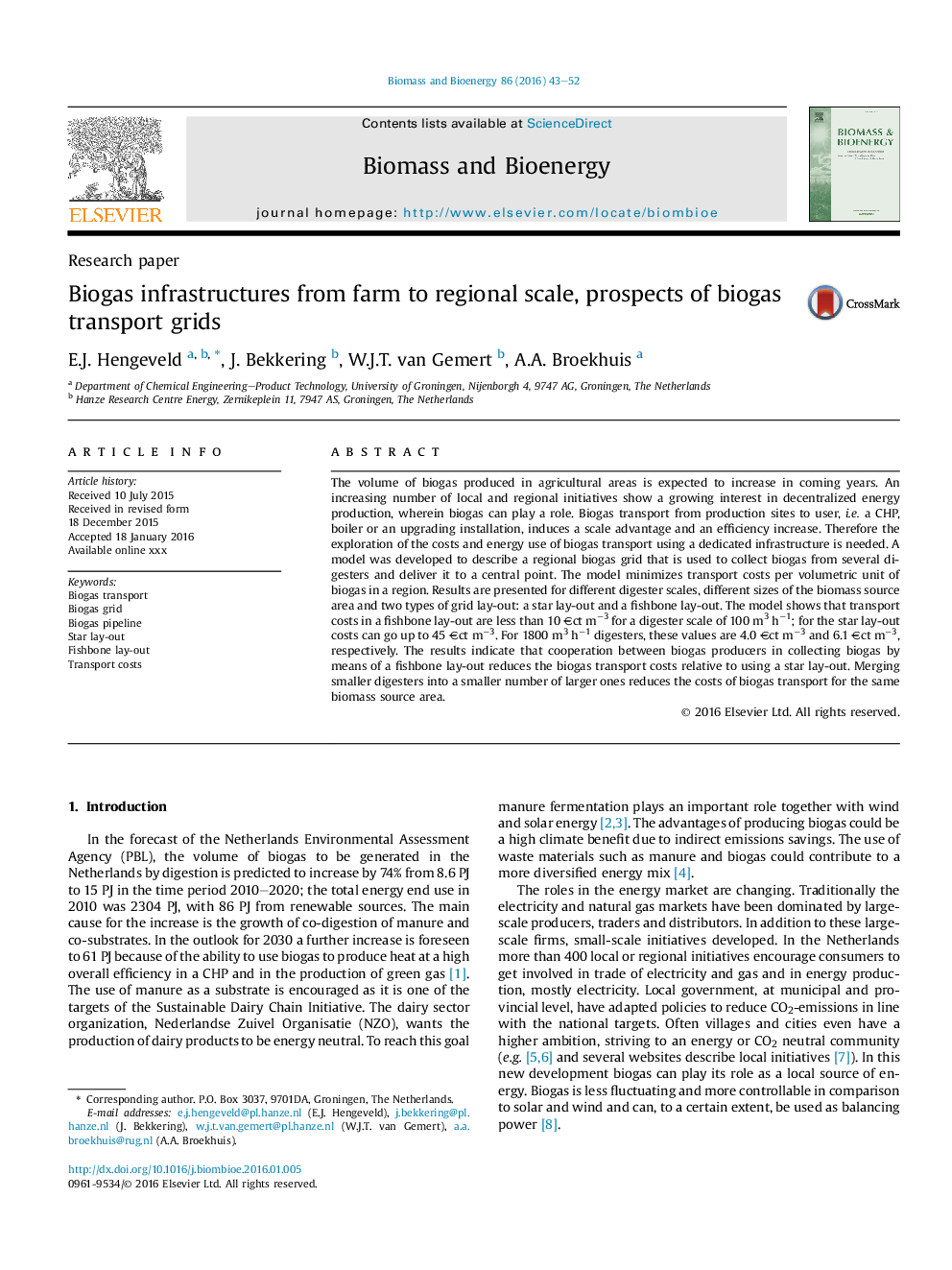| Article ID | Journal | Published Year | Pages | File Type |
|---|---|---|---|---|
| 7063429 | Biomass and Bioenergy | 2016 | 10 Pages |
Abstract
The volume of biogas produced in agricultural areas is expected to increase in coming years. An increasing number of local and regional initiatives show a growing interest in decentralized energy production, wherein biogas can play a role. Biogas transport from production sites to user, i.e. a CHP, boiler or an upgrading installation, induces a scale advantage and an efficiency increase. Therefore the exploration of the costs and energy use of biogas transport using a dedicated infrastructure is needed. A model was developed to describe a regional biogas grid that is used to collect biogas from several digesters and deliver it to a central point. The model minimizes transport costs per volumetric unit of biogas in a region. Results are presented for different digester scales, different sizes of the biomass source area and two types of grid lay-out: a star lay-out and a fishbone lay-out. The model shows that transport costs in a fishbone lay-out are less than 10 â¬ct mâ3 for a digester scale of 100 m3 hâ1; for the star lay-out costs can go up to 45 â¬ct mâ3. For 1800 m3 hâ1 digesters, these values are 4.0 â¬ct mâ3 and 6.1 â¬ct mâ3, respectively. The results indicate that cooperation between biogas producers in collecting biogas by means of a fishbone lay-out reduces the biogas transport costs relative to using a star lay-out. Merging smaller digesters into a smaller number of larger ones reduces the costs of biogas transport for the same biomass source area.
Keywords
Related Topics
Physical Sciences and Engineering
Chemical Engineering
Process Chemistry and Technology
Authors
E.J. Hengeveld, J. Bekkering, W.J.T. van Gemert, A.A. Broekhuis,
